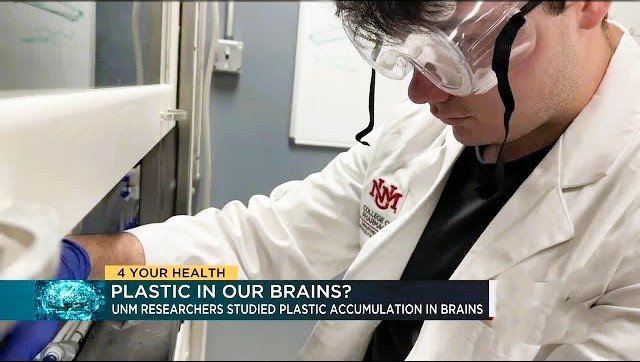Microplastics in the Human Brain: A Growing Concern for Researchers
Introduction
Recent research has revealed an alarming accumulation of microplastics in the human brain, with scientists drawing parallels to carrying the equivalent of a plastic spoon inside our bodies. A team of researchers at the University of New Mexico (UNM) has been investigating the presence of micro- and nanoplastics in human organs, uncovering significant findings that could have major implications for public health.

Plastic Accumulation in the Brain
Dr. Marcus Garcia, a lead researcher at UNM’s College of Pharmacy, has been studying plastic contamination in human tissues for the past three years. His team’s latest study focused on the extent of microplastic buildup in the brain and found that plastic accumulation has increased by 50% over the past eight years.
“We did have those moments where we were scratching our heads and going back, saying, ‘Is this correct? How is there this much?’” Dr. Garcia noted, emphasizing the unexpectedly high levels of plastic in neurological tissues.
Where is the Plastic Coming From?
Microplastics originate from decomposing plastic waste, which breaks down over time in landfills, soil, and water sources. These particles eventually enter the human body through ingestion and inhalation, accumulating in major organs, including the brain.
“As toxicologists, we always want to look at different environmental factors that may have toxic effects. Plastics are everywhere,” Dr. Garcia explained.
Connection to Dementia
One of the most concerning discoveries from the study was the presence of significantly higher plastic levels in individuals diagnosed with dementia. The research found that:
- Even the highest plastic concentrations in healthy brain tissues were 10 times lower than those found in dementia patients.
- While the study does not confirm that microplastics cause dementia, researchers believe there could be a potential link and are calling for further investigation.
“Hopefully, down the line, we can start linking the plastic amounts found in biological tissues to specific health conditions,” Dr. Garcia said.
Policy Implications and Future Research
The rising accumulation of plastics in human organs has sparked discussions on the need for policy changes at multiple levels. Dr. Garcia and his team suggest:
- Better management of plastic waste to prevent further environmental contamination.
- Stronger regulations to reduce plastic production and improve recycling methods.
- Federal, state, and local policies to mitigate plastic exposure and its potential health effects.
“We’re hoping that there can be policy changes around how we handle plastic waste, whether at the local, state, or federal level,” Dr. Garcia added.
Conclusion
The UNM study has provided critical insights into how plastics accumulate in the human brain, raising urgent concerns about long-term health risks. While more research is needed to determine the exact impact of plastic exposure on neurological diseases, these findings highlight the pressing need to address plastic pollution and its potential consequences for human health.




